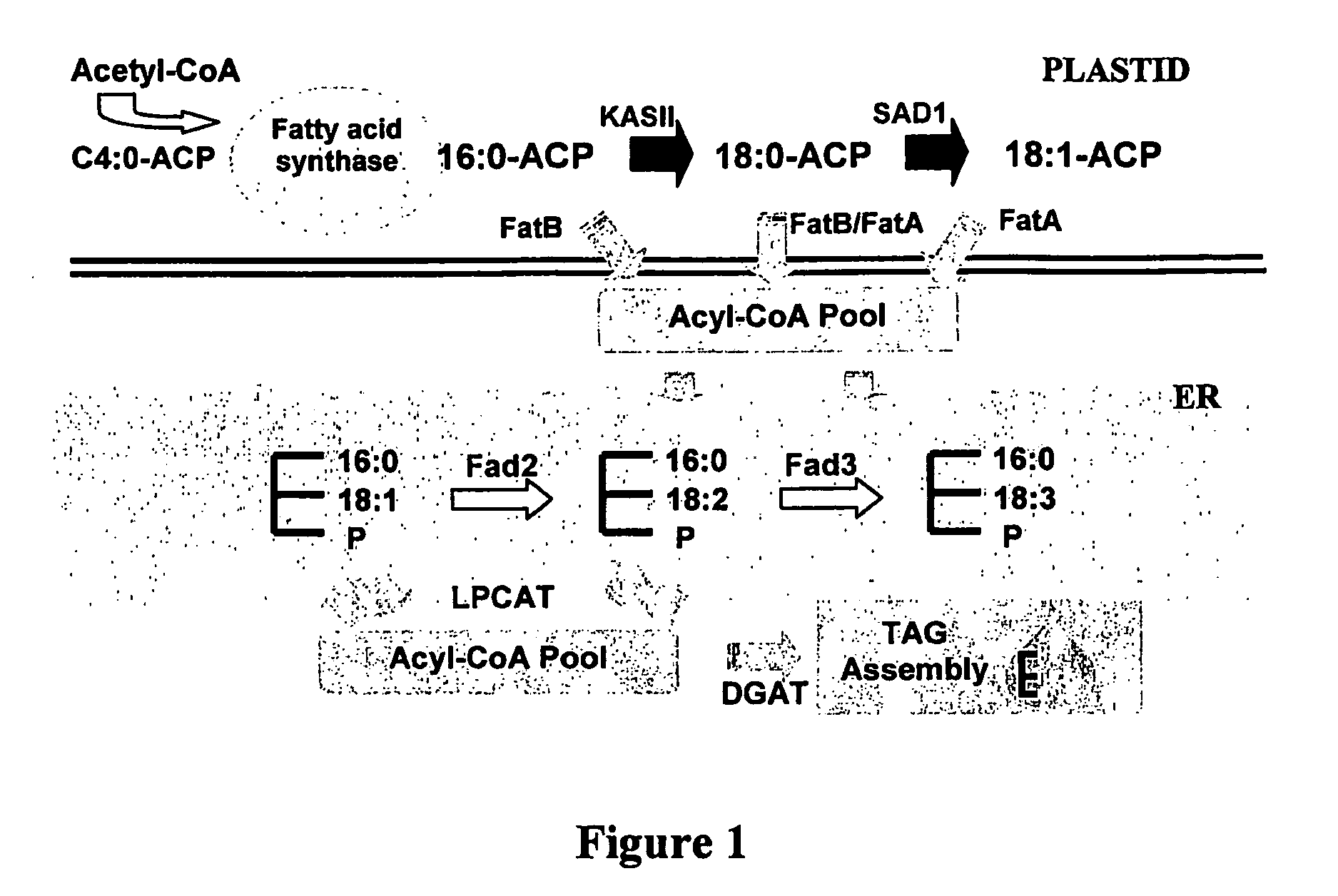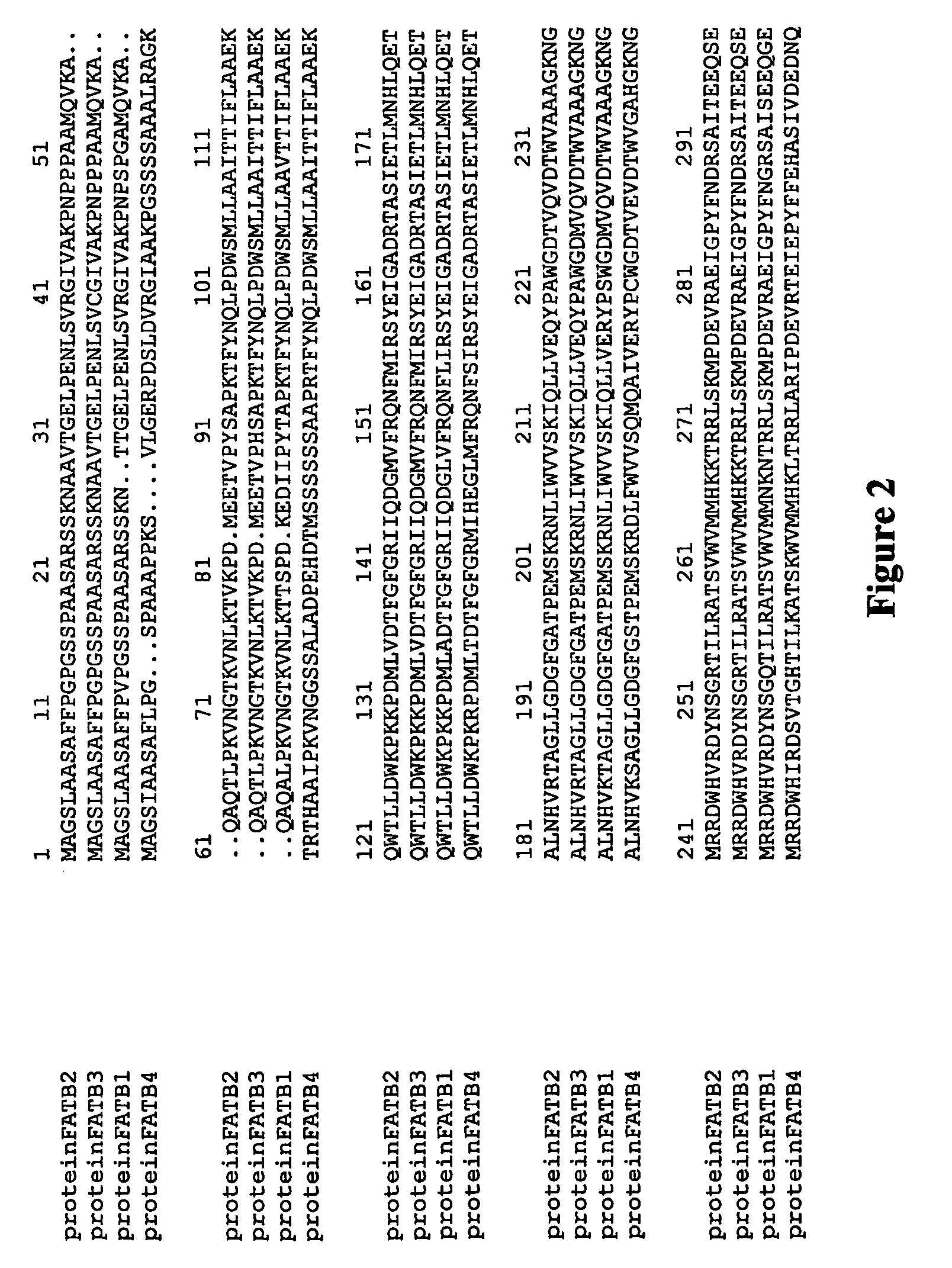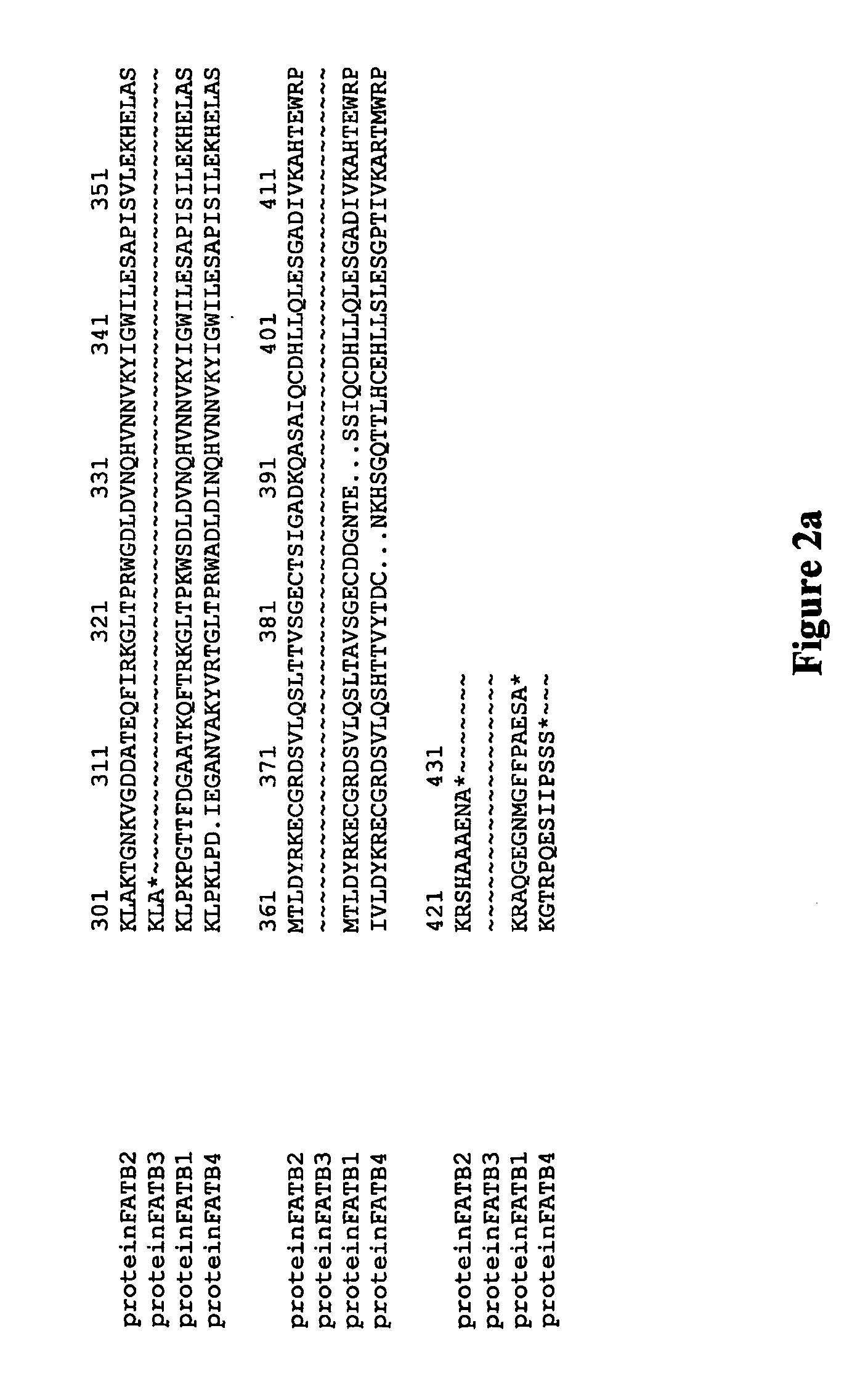Altering the fatty acid composition of rice
- Summary
- Abstract
- Description
- Claims
- Application Information
AI Technical Summary
Benefits of technology
Problems solved by technology
Method used
Image
Examples
example 1
Materials and Methods
[0285]Extraction of Oil with Sodium Methoxide
[0286]For fatty acid and other analyses, total lipid was extracted from rice grains as follows unless stated otherwise. In some cases, samples each consisting of a half grain were used for the extraction, with the second half-grain containing the embryo being used for embryo rescue. The technique can also be used with other cereals.
[0287]A single developing seed or half-seed was squashed between filter papers and placed in a tube. 2 ml 0.5M sodium methoxide was added, the tube sealed tightly and then incubated at 80° C. for 10 min. After the tube was cooled, 0.1 ml glacial acetic acid was added followed by 2 ml of distilled water and 2 ml of petroleum spirit. The mixtures were vortexed for 10 sec and, after the phases had separated, the upper petroleum layer was transferred to a small test tube. Approximately 1 g of potassium bicarbonate / sodium sulphate mixture was added to the test tubes and the mixture vortexed. The...
example 2
Identification and Isolation of FatB Genes from Rice
[0318]FatB genes encode the enzyme palmitoyl-ACP thioesterase which have the activity preferentially transferring fatty acids that have a length of 16 carbons or less from acyl carrier protein to acyl-CoA and thus prevent further elongation of the fatty acid carbon chain. Putative rice FatB sequences were identified using homology based searches using the sequence for the Genbank accession Arabidopsis locus AtACPTE32 and Iris locus AF213480. The program used was Megablast available at NCBI (http: / / www.ncbi.nlm.nih.gov / ). Default parameters used by NCBI were used and the databases used were both non-redundant (nr) and high throughput gene sequences (htgs) for rice, Oryza sativa. The most similar sequences from rice selected by the Megablast program were then translated and examined for the presence of the conserved sequence NQHVNN (SEQ ID NO:26) found in all FatB sequences. A further amino acid residue believed to be essential in Ar...
example 3
Identification and Isolation of Fad2 Genes from Rice
[0325]Proteins encoded by Fad2 genes (Fatty acid desaturase 2) are responsible for the introduction of a double bond into 18:1 fatty acids—they are Δ12 desaturases. The Genbank sequence from the Arabiodopsis locus athd12aaa was used to search the nr and htgs databases for Oryza sativa using Megablast at default settings. The most similar sequences retrieved from rice were translated and examined for the presence of conserved hydrophobic motifs FSYVVHDLVIVAALLFALVMI (SEQ ID NO:27), AWPLYIAQGCVLTGVWVIA (SEQ ID NO:28), ISDVGVSAGLALFKLSSAFGF (SEQ ID NO:29), VVRVYGVPLLIVNAWLVLITYLQ (SEQ ID NO:30) and the histidine rice sequences HECGHH (SEQ ID NO:31), HRRHHA (SEQ ID NO:32) and HVAHH (SEQ ID NO:33). The translated amino acid sequences of the isoforms obtained are shown in FIG. 7.
[0326]FIG. 8 provides an alignment of Fad2 sequences showing location of 5′ UTR in isoform AP004047 (lowercase) and location of primers used for amplification by...
PUM
| Property | Measurement | Unit |
|---|---|---|
| Fraction | aaaaa | aaaaa |
| Fraction | aaaaa | aaaaa |
| Fraction | aaaaa | aaaaa |
Abstract
Description
Claims
Application Information
 Login to View More
Login to View More - R&D
- Intellectual Property
- Life Sciences
- Materials
- Tech Scout
- Unparalleled Data Quality
- Higher Quality Content
- 60% Fewer Hallucinations
Browse by: Latest US Patents, China's latest patents, Technical Efficacy Thesaurus, Application Domain, Technology Topic, Popular Technical Reports.
© 2025 PatSnap. All rights reserved.Legal|Privacy policy|Modern Slavery Act Transparency Statement|Sitemap|About US| Contact US: help@patsnap.com



